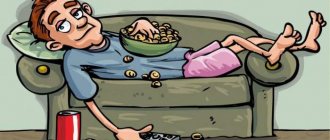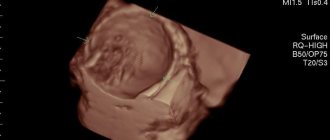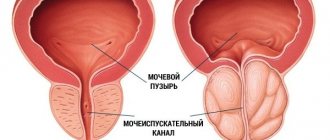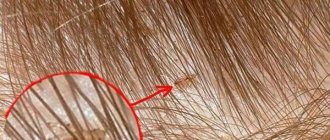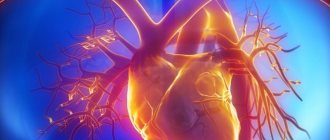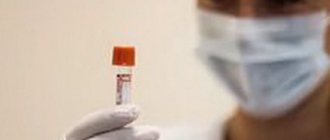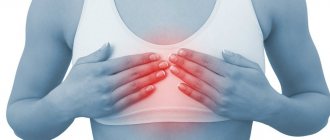Dermatovenerologist
Khasanova
Alina Rashidovna
8 years of experience
Make an appointment
Pediculosis is an infection of the human body by blood-sucking parasites that prefer to settle on the surface of the skin and hair. As a result of the activation of their vital functions and bites, the patient experiences pain, itching and irritation on the skin. Pediculosis occurs more often in children. This may be due to insufficient maturity of the child's immune system, which is unable to resist attacks from parasites. In addition, the disease often results from non-compliance with personal hygiene rules in preschool institutions.
Description
Depending on their habitat, lice are classified as follows:
- head insects often inhabit the scalp. Their timely detection can be difficult due to the length and thickness of the hair;
- pubic lice can be found in the genital area, on the eyebrows and in the armpits, where insects find favorable conditions for life and reproduction;
- body lice live on clothing in contact with the body. They feed on human blood, but do not transfer to him.
All three species share a similar structure and individual morphological characteristics. The length of insects is usually from 0.5 mm to 0.5 cm. Lice are attached to the skin and hair thanks to three pairs of legs. In the presence of favorable conditions and lack of treatment, they quickly multiply and spread throughout the body, causing inconvenience due to their vital activity and numerous bites. More often, pediculosis is diagnosed in workers in large groups, where insects easily crawl to a new habitat. The main method of transmission of pediculosis is through household contact, so a sharp surge in cases of the disease should be regarded as an unsatisfactory sanitary condition of the premises.
Infection with lice from animals is impossible: lice prefer to settle only on the human body and cannot feed on the blood of other organisms. Immediately after the appearance of the first individuals, a short asymptomatic period begins. Within 7-8 days, it can be extremely difficult to detect signs of head lice. An indirect indication of infection is severe itching in the temporal and occipital parts of the head, as well as pinpoint redness and ulcers that form at the site of bites. Often, pediculosis acquires signs of folliculitis, in which the hair follicles lose their viability and hair loss begins. The skin acquires a pronounced rough structure, and the bite sites darken, resembling pigment spots.
Active reproduction of lice greatly simplifies the detection of pathogens. Numerous eggs - nits - are attached to the hair. Their whitish color and drop-shaped shape stand out sharply on the surface of the hair. One individual can lay up to 10 eggs per day, the larvae of which become sexually mature within 14 days from the moment of birth. Nits resemble dandruff, but differ from it by tightly attaching to the hair due to the adhesive liquid secreted by the mother. It is not possible to wash off the eggs even with the help of hygiene procedures, because... the substance does not dissolve in water and detergents.
The largest number of cases of scabies and head lice are detected in children's groups and in places where there are constant crowds of people. Close bodily contact without basic hygiene rules leads to a sharp increase in cases of the disease. Visiting hospitals, schools, holiday camps, sanatoriums, hairdressers or places of detention may well lead to lice infestation. If a person does not take care of himself, rarely washes clothes and often shares personal accessories with others, the risk of lice increases significantly. Given the blood-sucking nature of these insects and the likelihood of transmitting serious diseases, it becomes clear that it is necessary to immediately consult a doctor when the first signs of lice are detected.
Are you experiencing symptoms of head lice?
Only a doctor can accurately diagnose the disease. Don't delay your consultation - call
How to detect nits
Adults cannot always be seen without aids. They cling tenaciously to the hair and can be immobile. These insects are brown or gray-brown in color and darken when saturated with blood. So sometimes they are indistinguishable against the background of hair.
If you have lice on your head, there will definitely be nits - parasite eggs. They are attached at the base of the hair, and only one nit can be attached to one hair. But females lay eggs in a crowded pattern - on adjacent hairs. Therefore, when heavily infested, they are arranged in clusters. Nits are often confused with dandruff. They are as small and white as flaking scales on the scalp. But the difference is that dandruff is located directly on the skin, and nits are located on the hair.
When examining your head to determine whether you have lice and nits, you need to pay attention to the hair at the back of the head and temples. This is where a large number of nits are usually found. They sit tightly on a hair, as the female secretes a special secretion that glues them. When trying to remove nits, you have to make an effort. When treating head lice with folk remedies, a vinegar rinse is used, which corrodes this adhesive composition. While dandruff can be brushed off your head with your hand, this cannot be done with nits.
Causes of head lice in adults and children
Close contact between people in the presence of at least one carrier of lice can cause infection of most or the entire team. Insect densities are increasing rapidly and the threat of disease spread is increasing exponentially. Having the ability to crawl onto clothing and household items, lice easily spread throughout the room. Therefore, among the main causes of damage are:
- team density;
- failure to comply with personal hygiene rules and measures to prevent head lice;
- ignoring the primary signs of the disease.
A significant proportion of the sick are families with a low standard of living. Timely detection of insects here can be complicated by the small size of lice. However, the attention of adults to children's health allows us to identify the problem at the earliest stages. Parents should be alert to the appearance of redness and pustules on the child’s body, and complaints of itchy scalp. Most diagnosed cases are due to head lice. Pubic insects spread primarily sexually, so they are more often found on the body of adults. If in a family a child sleeps in the same bed with his parents, the probability of developing pubic lice is close to 100%.
Diagnostics
Detecting the disease is not difficult: you just need to examine the hair and scalp. This must be done regularly, as it will be easier to cure it at the initial stage. The main sign confirming the diagnosis is the presence of nits at the base of the hair. They resemble dandruff, but unlike it, they are difficult to remove. And if you crush a nit between your nails, you will hear a click.
Sometimes differential diagnosis is required - if the disease is accompanied by dermatitis, seborrhea, pyoderma or eczema. For this purpose tests are taken. You can also examine the scalp under a Wood's lamp. If there are nits, they will glow.
Risk factors
The vast majority of cases of head lice are detected in preschool children, as well as in people with an asocial lifestyle and those who practice promiscuity. The high risk of infection, combined with poor hygiene, contributes to the rapid spread of lice, turning a person into a walking carrier of dangerous pathogens. Favorable factors for the development of the disease are decreased immunity, general weakness of the body due to poor quality nutrition, bad habits and frequent stress.
How dangerous are lice?
This disease causes quite unpleasant symptoms. Without treatment, the vital activity of parasites leads to deterioration of hair condition. They become tangled and crusty, forming tangles.
But this is not the danger of lice. Lice are capable of transmitting dangerous infectious diseases. In Russia, these insects carry typhus and relapsing fever, as well as Volyn fever. The infection enters the human bloodstream when the skin is pierced by an insect's proboscis.
When to see a doctor
For additional consultations and examinations, you can contact the doctors of JSC "Medicine" (clinic of Academician Roitberg) in the central district of Moscow at the address: 2nd Tverskoy-Yamskaya Lane, 10 (metro stations Mayakovskaya, Belorusskaya, Novoslobodskaya, Tverskaya, Chekhovskaya) . It is recommended to start with a visit to a dermatologist, who, if necessary, will involve a trichologist and psychologist in the examination and diagnosis. Experienced specialists will offer treatment for pediculosis, taking into account the age and characteristics of the patient’s body, as well as the degree of its damage. During the appointment, you will additionally be provided with comprehensive recommendations on how to treat head lice and avoid re-infection.
Infection from animals
Now we will answer the question of whether lice jump like fleas. Is it possible to get them from pets? Remember: lice cannot jump, since their body and the structure of their paws are completely unsuited to this. But fleas are typical blood-sucking parasitic insects that live in apartments and can jump.
The so-called cat lice are the cat lice, and the dog lice are the dog lice. These insects are commonly called lice only because they have a similar appearance to the parasite we are considering. It is worth remembering that each type of lice eater is specific; it cannot live on other animals (including humans). For example, if a cat's hair eater gets on a person, he will soon die. The same fate awaits them if they fall on a dog or any other living creature.
Treatment of pediculosis
The intensive reproduction process and short period of reaching sexual maturity contribute to the rapid spread of insects throughout the scalp. The simultaneous presence of adults, larvae and nits forces the use of drugs that affect lice regardless of their “age”. The most effective remedies against pediculosis pathogens include:
- the use of topical formulations - shampoos, sprays and lotions for hair treatment;
- combing with a fine-toothed comb to mechanically remove insects and nits;
- the use of means to heal bite sites and prevent their suppuration;
- cutting hair to create an easier-to-maintain hairstyle.
An important measure to combat lice is thorough washing and disinfection of clothing and bedding.
Important: if one of the pupils in a kindergarten group is found to have lice, other parents should be notified to more thoroughly monitor possible infestation. The use of self-prepared shampoos and preparations for the treatment and prevention of head lice is not recommended due to their low effectiveness and possible danger to the child’s health.
Drugs
We answered the question about whether lice can jump, looked at treatment methods, now we’ll talk in more detail about drugs for head lice. They contain the following active ingredients:
- permethrin (Nittifor solution, Nix cream, Medifox gel, Para-plus aerosol, Veda, Veda-2 and NOK shampoos, Hygia solution).
- pyrethrin (Spray Pax aerosol).
- phenothrin (Anti-bit liquid soap, Itax liquid, Parasidosis liquid, Bin lotion, Phenol lotion, Sumitrin shampoo).
- malathion (emulsion and gel “Pedilin”, aerosol “Para-plus”).
Preventive measures
The list of recommendations for the prevention of head lice in adult patients includes the following rules:
- strict adherence to personal hygiene provisions;
- systematic monitoring of the health of the child and older family members;
- periodic treatment of wardrobe items and bed linen against pediculosis at high temperatures;
- isolation of sick family members;
- regular preventive use of anti-lice products;
- refusal of casual sex.
To protect your child from lice infestation, you must:
- carefully monitor his health;
- teach basic hygiene rules, prohibit using other people’s personal belongings;
- take care of a neat hairstyle;
- Carry out regular inspections for head lice in order to promptly detect the causative agents of the disease.
If the diagnosis is beyond doubt, you should immediately begin a course of treatment. This will help you get rid of unpleasant symptoms and avoid infecting others.
Make an appointment
Dermatologists at the NEARMEDIC clinic network recommend contacting a doctor immediately if you suspect an infection. The specialist will conduct an examination and prescribe the most effective medications, and also give recommendations on additional measures regarding personal belongings, clothing, and bedding. For the patient’s comfort and to avoid the spread of infection, it is possible to call a specialist to your home.
You can call a doctor or make an appointment on the website, by calling the contact center or the nearest convenient clinic to you. Registration through the website is carried out around the clock, through the registry - during business hours.
Kerosene
Kerosene has proven itself in the fight against parasites when symptoms of lice appear in humans. However, this substance is very aggressive and can only be used as a last resort by diluting it with vegetable oil in a ratio of 1 part kerosene to 10 parts oil. Treatment is carried out according to the standard scheme: the resulting mixture is applied to the head, left for about an hour, rinsed off and thoroughly washed.
Kerosene cannot be used to eliminate the symptoms of lice in a child, since there is a risk of not only burns, but also acute poisoning.
Associated symptoms
In addition to the main signs of parasite damage, accompanying symptoms should also be highlighted, namely:
- •increased irritability, worsening mood, insomnia caused by itching, loss of appetite due to depressed morale;
- • the appearance of pigment spots that look like bruises as a result of massive breakdown of hemoglobin from red blood cells;
- • general weakness, apathy, depression;
- • enlarged lymph nodes;
- • the appearance of tangles in the hair – with extensive damage and poor hygiene;
- • increased body temperature
- • headache;
- • allergic reactions of the body to parasite bites.
A child who cannot yet speak or cannot explain his feelings often experiences increased moodiness, tearfulness, changes in behavior, and sleep and appetite disturbances.
